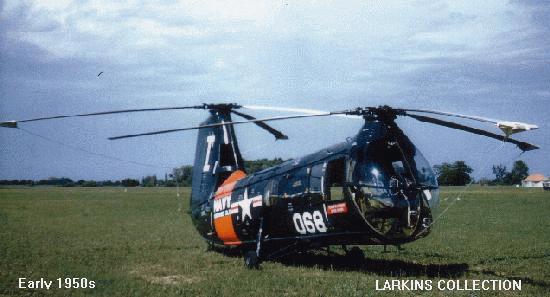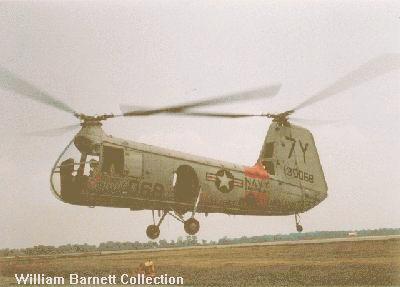
Piasecki HUP-2

 |

Photograph furnished by William T. Larkins |
 |
| These photographs may not be used or published, neither commercially nor for other purposes, in any form, including but not restricted to the Internet, magazines and books, without the photographer's permission. |
HUP-2Piasecki Helicopter Corporation's response to the US Navy Bureau of Aeronautics requirement issued in 1945 for a helicopter designed specifically for operations at sea within 100 miles of its ship, the HUP was designed to be both compact enough to fit aboard a variety of ships, yet capable of performing vertical replenishment, ASW, rescue and plane-guard duties. The HUP got its power from one (1) Continental R-975 air cooled radial engine, this was the same engine which many WWII tanks used. Construction was metal, except the rotor blades which were wood and fabric covered of the pylon extending aft. Early production mdels had autopilot and dipping sonar incorporated into the design. This was the Navy's first Anti- Submarine Warfare helicopter. ASW technology was in it's infancy at the time, and in 1952 production shifted to non-ASW capable HUP-2's. Production continued through 1953. Navy and Marine Corps air stations and reserve units began using them for search and rescue, as well as utility missions. Initial HUP-2 ASW versions were delivered in late spring 1953. HUPs were underpowered and the ASW versions of the aircraft were soon stripped of their ASW gear and relegated strictly to utility and SAR missions. After a production run of 336 aircraft deliveries concluded in 1954, The HUP stayed in service through the 1950's and were best known for tas plane guards, flying from carriers. Standard crew for these plane guard missions was one pilot (in the left seat) and one aircrewman to assist in rescues. A single HUP would maintain position off the carrier's starboard side at flight deck level during day VFR operations, often flying sideways to enable the pilot to watch the action. The last HUPs were phased out of service in 1964. |
Copyright © 1999NASGIVM All rights reserved.
Revised: January 28, 2010